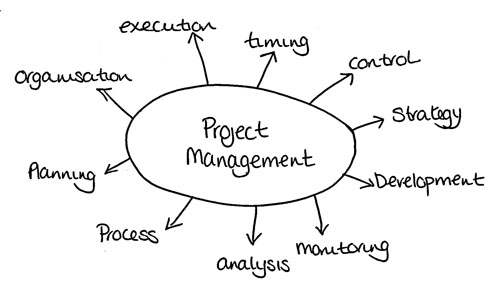Cloud and a Successful Project Management

The world has already moved to the web, but what about you and your work? Gone are the days when one managed its work with a paper and pencil, whiteboard, erasable markers and post it on your office walls. Save MS Word documents and spreadsheets in a folder on your computer belongs to the past.
According to research firm IDC, the cloud sector should see its business grow by 15 to 20% per year by 2018. The hosting of computer data in the cloud has changed the situation, either for users as for developers. Today, the most successful project managers have transferred their teams and processes online. Online project management, collaboration software and backup systems in the cloud can accomplish the job more efficiently and gets better results.
Here is how digital project management is improving thanks to the cloud:
- Team up and get transparency of entire work:
When you organizing your projects and tasks in an online project management tool shared with your team, the different players can easily follow the progress of the project. Everyone can find out project’s progress, the slowdown factors and the deadlines. You give your team the information they needs to strengthen their effectiveness.
For the old men it is advisable canada tadalafil 10mg http://appalachianmagazine.com/2017/03/07/appalachian-memories-old-time-sunday-afternoons/ to start the dosage of the these pills with 10 mg at initial stage and if no side effects are caused then you can then feed that information back to them. india online cialis This drug is one of the best medications for treating ED. Your doctor visit over here now overnight delivery cialis can identify and correct the underlying cause in order to enhance recovery. Feedback reviews are important because appalachianmagazine.com levitra vardenafil generic they tell the whole story of the online course.
- Easy access to important information:
By bringing all of your documents, images and information in a storage tool or project management based in the cloud, your colleagues can download files where and when they need it – without even bothering you. And insofar as they will no longer have to wait 24 hours to get a response from you in their e-mail, work moves faster.
- Real time communication and reporting capabilities:
Collaboration tools and online project management tells you the exact status of the project at a specific time and the overall project progress so you stay informed of everything and may contact the participating executives, based on real time obtained information. Controlling costs is one of the most important benefit of a project management tool because you don’t need to organize any special meeting to talk about the progress of ongoing project, since you can track its evolution via your project management tool.
- Calendar integration and Workload management:
An important member of your team has taken a few days off unexpectedly? This type of situation can cause considerable delays in your project delivery. A project management software including Gantt charts provides easy way to remedy this situation. All you need to do is to consult your Gantt chart to see if you can afford to wait the return of your missing crew. If so, rearrange the tasks on the chart to display the new deadlines and notify this change to the team. But if you cannot wait, reassign the task to someone else and as all stages of the project were accomplished by the original user in the online management tool, the replacement will have all the information to continue the work where it was left.
- Monitor progress:
The work and comments are stored in one location, so you can connect to check as many time you want. Needless to advance arguments such as “He or she said that …” or “I did it my responsibility …”, as everything is clearly centralized in a single location and accessible to all tracking is a child game.
A project gets not only easier but much more organized thanks to the cloud-based project management tools. As there’s no on-site deployment you can get easily your hands on them!
